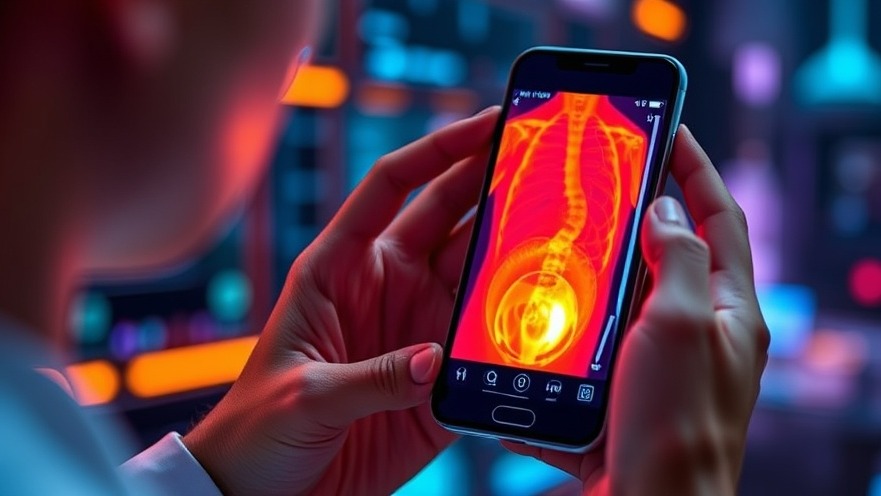
Transforming Diagnostics: How Smartphones Could Revolutionize Healthcare
Imagine a future where routine medical diagnostics can be performed using just your smartphone. With recent advancements in infrared technology, this vision is on the brink of becoming a reality. According to Regents’ Professor of Physics, Unil Perera, the research on ATR-FTIR (attenuated total reflectance Fourier-transform infrared) spectroscopy could allow patients to take health readings from home, potentially leading to significant breakthroughs in early disease detection and personalized medicine.
The Science Behind ATR-FTIR Spectroscopy
ATR-FTIR spectroscopy is a powerful method that uses infrared light to investigate the molecular composition of various samples. By analyzing the vibrational states of molecules, this technique can reveal characteristic signatures indicative of certain diseases. Perera's research has demonstrated its efficacy, particularly in detecting conditions like melanoma and lymphoma. As doctors increasingly look for non-invasive diagnostic tools, ATR-FTIR's precision offers hope for early intervention and treatment.
Patient-Centric Care: The Future of Personalized Medicine
This innovative technology represents a shift towards a more patient-centric approach in healthcare. By enabling people to monitor their health from home, it not only empowers patients but also alleviates pressure on healthcare facilities. The ability to transmit real-time data directly to physicians transforms the doctor-patient dynamic, facilitating timely interventions that can significantly alter the course of treatment. Moreover, frequent monitoring could lead to a better understanding of chronic conditions and how they respond to various treatments.
Global Implications: A Healthier Future for All
While the initial focus of Perera's research pertains to specific diseases, the implications of this technology extend far beyond. Globally, implementing such advancements could improve health access in underserved communities, where medical facilities may be scarce. Affordable smartphones paired with sophisticated diagnostic tools could bridge the healthcare gap in developing nations, making early diagnostic capabilities available to millions.
Counterarguments: The Challenges Ahead
Despite the excitement surrounding these advancements, some experts caution about the limitations and challenges associated with smartphone-based diagnostics. Issues of data privacy, accuracy of readings, and the need for clinical validation still loom. An over-reliance on technology may also lead to unnecessary anxiety among patients, as online health diagnostics are not foolproof. It is essential that regulations keep pace with technological advancements to ensure patient safety and data integrity.
Real-World Applications: Current Collaborations and Future Directions
Currently, research groups are actively collaborating with tech companies to push the envelope in integrating infrared spectroscopy into commercial devices. However, this transformation will require rigorous testing and validation. Future models should include user-friendly interfaces, integrating patient education to ensure individuals can effectively interpret their health results.
Investing in a Healthier Tomorrow: Action Steps for Healthcare Practitioners
As concierge health practitioners, staying informed about these technological trends can significantly impact your practice. Consider advocating for clinical trials that utilize such innovative diagnostics in your community. Additionally, fostering collaboration with technology experts can ensure that your practice remains at the forefront of medical advancements.
As we stand at the precipice of a technological revolution, the intersection of smartphones and healthcare could herald a new era of wellness and accessibility. Staying attuned to these developments is not just beneficial—it's essential for modern healthcare practice.
By embracing such innovations, you can enhance your patient care while contributing to a broader movement towards more equitable healthcare. Let's not just wait for the future; let’s actively shape it together.
 Add Row
Add Row  Add
Add 






Write A Comment